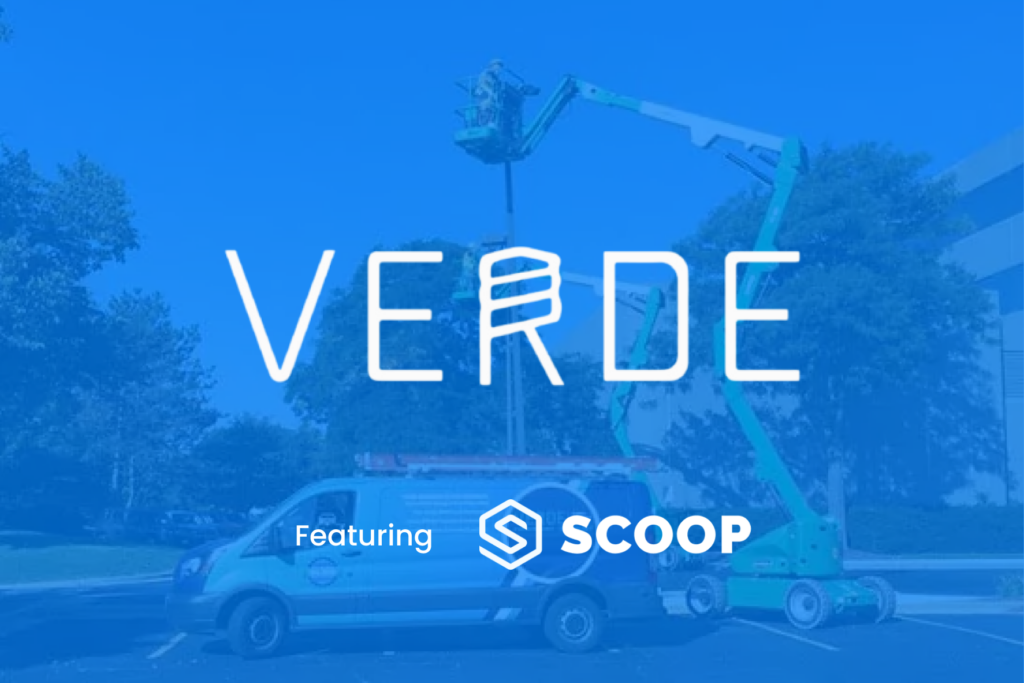
When one solar installer outshines the competition, everyone wants to know ‘how did they do it?’.
We sat down with Ohio’s top solar installer, ARP Solar, to tell us how they managed to sustain rapid growth in an economically challenging environment. John McNamara (COO at ARP Solar) shared a live demonstration of ARP Solar’s connected operations hub.
In the webinar highlights, learn the best practices ARP Solar used to implement workflows and personalize views to empower each team member for success. We have summarized and paraphrased key parts of the session. Access the webinar recording here.
Table of Contents
ARP Solar’s Operational Breaking Point
1. What was ARP Solar’s old way of completing installations?
2. When and how did ARP Solar realize they needed to reshape operations?
Strategies to Achieve Operational Success
1. Could you share the key insights you gained from your solar industry peers?
2. How does your current operations solution accommodate managing partners and subcontractors?
3. What’s a top-of-mind feature in your new operations hub that has helped streamline communication?
Strategies to Approach Change Management & Empower Teams
1. Explain your strategy of beginning with simplicity and integrating user feedback in deploying the new operations system.
2. How has ARP Solar’s approach of gradual improvement impacted the team’s performance?
3. What has been the biggest change since rolling out a new operations system?
Live Demo: Inside the Operations Hub of Ohio’s Top Solar Installer
1. Explaining ‘scoops’ and understanding work orders
2. ARP Solar’s Residential Solar Installation Template
3. How to Apply Conditional Display Rules for Project Accuracy
4. ARP Solar’s Apps & Automated Workflows
5. Using Dashboards for Forecasting & Managing Installation Pipeline
Introducing ARP Solar
John (COO at ARP Solar): “In 2008, Gary Easton founded ARP Solar. He installed his first solar system on his own home in 1999. With credentials as a master electrician and NABCEP-certified PV installation professional, he’s been at the forefront of this industry.
ARP Solar completes residential commercial installs throughout Ohio, West Virginia, Kentucky, we’ve got a team of about 20 incredible solar heroes. I think our story is very similar to a lot of folks that are on the webinar. We’ve been on that solar coaster for 15 years now.”
“As installers, we know that growth wave is coming. So I came on board ARP Solar looking at what can we do to prepare ourselves.”
– John McNamara, COO at ARP Solar
Return to Table of Contents.
ARP Solar’s Operational Breaking Point
Without streamlined processes, ARP Solar’s operational headaches and friction points multiplied, hindering speed and the ability to deliver outstanding installations. They needed to create a single viewpoint into a project from start to finish, enabling them to scale for growth.
“We were reflecting on a negative customer interaction. I asked, “What are we going to do in the future to prevent this from happening again?”. Someone dismissed it, saying we had no time. And that’s terrifying to me…”
-John McNamara, COO at ARP Solar
Question: What was ARP Solar’s old way of completing installations? What systems were involved?
John (COO at ARP Solar): “It was 14 years of riding that roller coaster that had gotten them to grow and struggling through those periods where maybe the volume wasn’t as great. They built processes through Google Sheets through Excel. Folks had their own Word document on what they were doing in their step of the process, leveraged their emails quite a bit, and a lot of disconnected steps in the process.
There were a lot of manual handoffs and searching for information. We talked about being detectives at ARP Solar in the early days: you really had to spend a lot of your time out there searching for information.”
Return to Table of Contents.
Question: Were there specific events or challenges that highlighted the urgency of reshaping your day-to-day operations?
John (COO at ARP Solar): “I used to say that ARP Solar was run on passion and duct tape. Our team’s deep love for solar and the company got us through challenging times, but it forced everyone to do 120% of their job, leading to dropped tasks and resentment.
We were reflecting on a negative customer interaction. I asked, “What are we going to do in the future to prevent this from happening again?”. Someone dismissed it, saying we had no time.
And that’s terrifying to me because it meant we’d face the same problem again, maybe it’s two weeks, two months, or another year down the road.
Without the capacity and structure to spot customer friction points, we’ll keep encountering the same pains repeatedly. That was a lot of the impetus to really take a step back, and look at our process and Conveyor Belt of Operations. It’s a term that gets used a lot at Scoop and it’s one of my favorite terms.”
Return to Table of Contents.
Strategies to Achieve Operational Success
Question: Could you share how your solar peers in the industry have influenced your approach to solving operational challenges?
John (COO at ARP Solar): “I’m grateful for our solar community and our shared commitment to doing things right. To address our operational challenges, I tapped into my network and asked what I should be looking at given some of these operational challenges. I was fortunate enough to have a few good folks mentioned Scoop a couple times.”
Then, in a mildly insane way, I dove into their Conveyor Belt of Operations series, a five or six-hour journey to focus on process management. I really saw a lot of the solutions for the challenges that we had coming out of that, particularly a field-centric approach. As you mentioned, without a field-friendly tool, even robust backend reporting won’t bridge the gap.”
Here is the Conveyor Belt of Operations webinar series that John referred to in the interview. It’s a 5-part series to help solar installers streamline operations from sales, design, installation, closeout, and service.
Return to Table of Contents.
Question: How does your current operations solutions accommodate for managing partners?
John (COO at ARP Solar): “I noticed Scoop’s scalability – no user limits and partners from outside our organization can access it. They can track project progress and share information with us. This not only addresses current issues but also ensures a future-proof, scalable process unaffected by user numbers or storage constraints.”
Question: What’s a top-of-mind feature in your new operations hub that has helped streamline communication?
John (COO at ARP Solar): “Scoop’s document repository is a game-changer. It consolidates scattered documents from various sources into one central hub. The number of places where we were keeping documents in the past is terrifying. And this brings it all into one centralized location. It stops us from having to log into other people’s emails when they’re on vacation.”
Return to Table of Contents.
Strategies to Approach Change Management
Question: Explain your strategy of beginning with simplicity and integrating user feedback in deploying the new operations system.
John (COO at ARP Solar): “I’ve learned that simplicity at the start, followed by thoughtful additions based on user feedback, is the key to gaining buy-in. Our aim is to provide the right information to the right person at the right time.
With Scoop, we have the real-time ability to make improvements. Our ‘Scoop Change Log’ in Slack lets users suggest changes. When I get a notification for those changes, I can pop into Scoop configuration, publish a change in five minutes. I can tell my field crews “hey, refresh that page, go out and see if that makes sense to you. And if that supports you better in what you want to do”.
This approach has fostered strong user adoption and enthusiasm for Scoop.”
Return to Table of Contents.
Question: How has ARP Solar’s approach of gradual improvement impacted the team’s performance?
John (COO at ARP Solar): “We adopted a philosophy similar to tightening lug nuts in changing a tire. You do the star pattern where you tighten the lugs a little bit and they may not be loose, the vehicle may not even be safe at that point. But you go on to the next one, you tighten it a little bit. And you look to improve how that that tire is adhered to the vehicle.
Initially, our focus wasn’t on perfection but on gradual improvement. We rolled out Scoop with the idea that ‘good’ was the goal for now, knowing we’d evolve over time.
Just as you tighten lug nuts progressively to ensure a smooth ride, we approached each app within Scoop for communication enhancement. We didn’t aim for a complete overhaul; instead, we took it step by step, continually getting better and evolving.
This approach acknowledges the value of feedback, understanding that every hub matters in the bigger picture. The Slack channel is still active, showing its ongoing importance.
Now, reflecting on ARP Solar’s current state compared to a year ago, it’s like going from a bumpy ride to a smooth journey. The team’s experience has transformed positively, and we’re witnessing remarkable changes in our operational output. It’s an exciting evolution.”
Return to Table of Contents.
Question: What has been the biggest change since rolling out a new operations system?
John (COO at ARP Solar): “I think for me, text messages are probably the most emotional component of our evolution that ARP Solar. At the beginning of this year, text messages were 90% panic. They’d come at all hours, creating negativity. Now, with a centralized communication platform, people find answers there, and it’s transformed the energy. After-hours texts are often for birthday wishes or humor. And sometimes you don’t recognize the change as it’s happening. But you look back and you go, ‘oh, my goodness, the vibe here was completely different 10 months ago than it is today’.”
At the beginning of this year, text messages were 90% panic. They’d come at all hours, creating negativity. Now, with a centralized communication platform, people find answers there, and it’s transformed the energy.
-John McNamara (COO at ARP Solar)
Return to Table of Contents.
Live Demo: Inside the Operations Hub of Ohio’s Top Solar Installer
ARP Solar agreed to show us a glimpse inside their operations system. Before you review the next section, it’s important to understand the concept of ‘Scoops’ and how it applies to ARP Solar’s daily operations.
Explaining ‘scoops’
Scoops represent executable work order items, such as site surveys, design, permitting, installation, and job closeout—phases of a project broken into manageable tasks. These scoops can be accessed in the field via our mobile app, even offline. For instance, a technician conducting a site survey for a new residential installation can open their scoop on the app, like ‘Field Tech’s site survey.’ It provides all customer and job site information, required tasks, and triggers workflow notifications for the next steps. Each scoop and project phase is fully configurable through app templates.
Return to Table of Contents.
Live Demo: Residential Solar Installation Template
Access the full webinar recording here.
John (COO at ARP Solar): “We have a template for residential installs with five phases. First, is the sales opportunity where we convert leads into design proposals and agreements for site surveys. Next, is the site survey phase where we gather essential job information and images. Then, the pre-install admin phase, which includes permitting, interconnection, and final plan sets. The installation phase involves our field team, and Scoop allows us to document work comprehensively. We also use a pre-install site walk to document any pre-existing damage.
A lot of us came from SiteCapture, which is a platform where you can document images of the installation of the work that you’ve done. To make sure that you’ve got a good record of that work, Scoop actually gives us an opportunity to go a step further. We build out a pre-install site walk, and give instructions to that field tech to document any pre-existing damage that might be out there.”
Return to Table of Contents.
Live Demo: Conditional Display Rules
Access the full webinar recording here.
John (COO at ARP Solar): “Conditional display rules are dynamic instructions within our template. For example, we have a partner who handles post-installation tasks, so the rule removes that stage from our workflow since it’s not applicable. Another rule, which is constantly evolving, is tied to battery mounts. When a battery is involved, it triggers an additional section for battery commissioning.
Throughout the entirety of our template, we really rely on those conditional display rules. And that is definitely that’s that part that I’m talking about getting there simple first. In my initial version, I was trying to build out a lot of that logic in there. Allow that to grow organically as you use the platform and listen to feedback from the [field techs] out there.”
Return to Table of Contents.
Live Demo: Apps & Automated Workflows
Access the full webinar recording here.
John (COO at ARP Solar): ”In our Scoop platform, we utilize various apps and workflows to streamline our operations. We can zoom into specific ‘scoops’ to examine stages and processes within them.
Post-Install Inspection Progression
Our post-install ‘scoop’ follows a highly structured, linear order of operations for customer completion.
- Associates schedule inspections, which typically pass, leading to the “inspection passed” stage.
- Automated tasks are triggered upon inspection passing to ensure seamless communication and actions.
- Auto actions include invoicing, informing specialists, updating the office manager, and communicating with relevant parties.
Auto tasks [in Scoop] reduce communication gaps and ensure smooth transitions between team members.”
Return to Table of Contents.
Live Demo: Using Dashboards for Forecasting & Managing Installation Pipelines
Access the full webinar recording here.
LOOXY™ is Scoop’s analytics and reporting platform. It’s designed for executives and operations leaders to gain insights into the wealth of data generated daily and weekly within your organization.
For solar installers, the platform presents this data in a visual dashboarding environment, making it easy to comprehend and analyze. In essence, LOOXY™ empowers leaders to make informed decisions by transforming complex data into actionable insights through intuitive visualizations.
John (COO at ARP Solar): “LOOXY™ serves as that 5,000-foot vantage point, offering a perspective for forecasting and leadership. It grants us insights into various aspects:
- Platform Utilization: We can assess how effectively we employ the platform by tracking the creation of ‘scoops’, revealing its impact on our customers and operations.
- Timing Analysis: While overcoming legacy issues, we’ve gained the ability to precisely measure workflow durations across different work sections, improving our efficiency.
- Projecting and Forecasting: LOOXY™ empowers us to project and forecast our work based on accumulated data.
I must give a special mention to Michael Moore, our invaluable support at Scoop, who assists us in building out this information. He helps with the intricate task of creating conditional display rules, a bit like constructing a pivot table. These two graphs here focus on total invoice amounts relative to installation timelines, providing essential financial insights. We even factor in the time until installation, thanks to flags in our pre-install scoop. This lets us see where we stand one to two weeks and six to eight weeks out. It’s not just about finances; we also consider system array sizes to plan our workforce effectively. So it really adds a lot of visibility into what’s coming down the pipeline.”
Return to Table of Contents.
Scoop is a connected operations hub built for solar and energy specialists to streamline installation and service operations. Learn more about how residential and commercial companies use Scoop for solar, battery storage, EV charger, roofing, and other renewable installations.
Return to Table of Contents.


